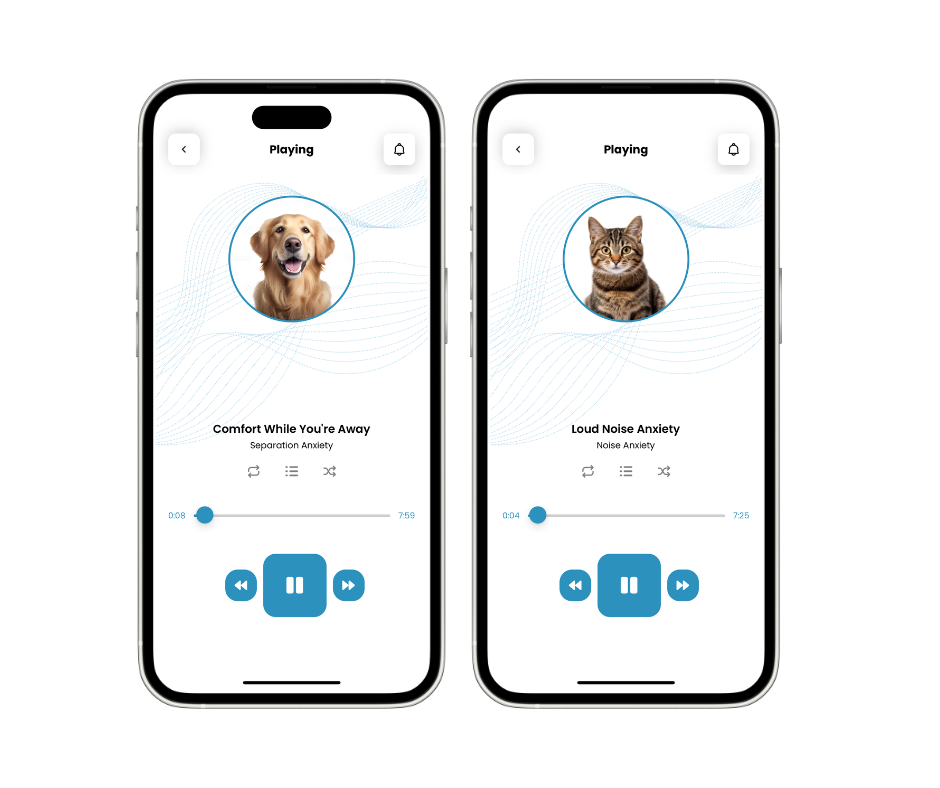I’ve been writing meditations for my dog, Rigby and I to calm into and I’d like to share them with you. Here is a five minute meditation called “The River”. I hope you and your pet enjoy it too! Janet Marlow, Sound Behaviorist, Founder of Pet Acoustics.
Here are five benefits you and your pets will enjoy through a shared meditation practice:
1. Strengthen Safety and Trust
Often humans lack the ability, or in some cases the desire, to create a truly safe environment in which pets can flourish. Without a sense of stability, especially in their early developmental phases, many animals may begin to feel and act from a place of insecurity and fear—which can be particularly true for adopted rescue friends. The experience and emotions you invoke in them from the beginning either builds confidence and lessens fear, or it erodes one of the most important aspects of relationships: trust. Just as you feel more grounded following your own meditation practice, so do your furry companions. Find a quiet spot where you and Rex can practice together daily, and watch your bond grow.
2. Reduce Stress
Among other positive influences of a regular meditation practice, your stress response takes a much-needed break (this is also why a good night’s rest is so important). When you lessen the stress response of the body, its natural healing capabilities are able to go to work. This is especially important for older, ailing, or otherwise compromised animals. In fact, a rejuvenated body and mind, along with the other benefits you experience as a result of meditation, is something that may end up being one of your pet’s favorite benefits of being with you (although they probably wouldn’t turn down a tennis ball if offered!).
3. Harmonize and Attune Energy
When meditating, you are naturally in a calmer and more passive state. Your energy center tends to open and realign when you’re in the practice. As energy isn’t bound by the physical body, and is not limited to human bodies, you and your pet can merge together on this subtle, yet powerful level. This is the same energy that draws animals to certain people more readily, or causes them to react strongly to someone new. Meditation helps to deepen the bond and understanding between you and your pet.
4. Build a Bridge of Communication
Your intention of peace and harmony is like a safety blanket to an animal who desires bonding. This is especially true for animals who aren’t yet confident in their surroundings, or perhaps feel confused by the circumstances happening around them. In the silence of meditation, the messages of your heart energy can be felt by your pet on a vibrational level. Another way to connect to your pet is to partner your breathing for a minute or so. While sitting quietly with your companion, place your hand on their chest area and bring your attention to the movement of their breathing. Then, as long as it’s comfortable for you, match your breathing pattern to theirs. Take a few moments to tune in to your physical and energetic union.
5. Thrive with Daily Routine
Instinctively, animals align themselves with the rhythms of nature. Since this is their natural inclination, a daily routine helps them to stay more balanced—and potentially healthier overall. Practicing meditation first thing in the morning is the best bet for committing to a daily routine. Even five or 10 minutes will help start the day with a calmer, clearer mind and an alert, but relaxed body. Set your clock a few minutes earlier each morning, find a comfortable place to sit with your pet, and give yourselves the gift of silence. You’ll be reaping the reward in no time at all.
There are many wonderful ways to share time with your companion animals, yet doing something like meditation together may be one of the most meaningful. Meditation can help improve your overall health and well-being, and can make a huge difference in theirs as well. And with all the unconditional love they give to you each day, they deserve the very best in return.
Excerpts from Chopra.com



























